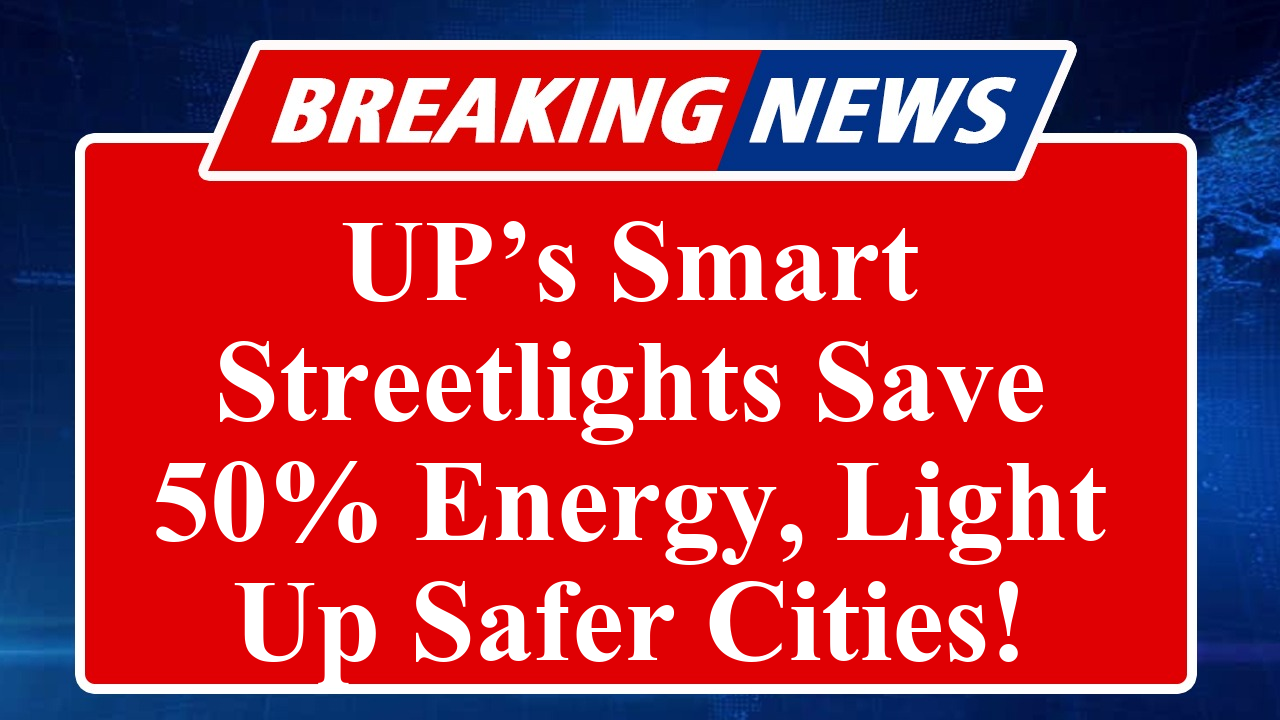“Uttar Pradesh is revolutionizing urban lighting with smart streetlights, slashing energy consumption by up to 50% and enhancing safety. The state’s initiative, integrating IoT and LED technology, aligns with India’s Smart Cities Mission, with cities like Lucknow and Kanpur leading the charge. Real-time monitoring and adaptive lighting are reducing costs and carbon footprints, setting a model for sustainable urban development.”
UP’s Smart Streetlights Transform Urban Energy Use
Uttar Pradesh, one of India’s most populous states, is making significant strides in adopting energy-efficient technologies through its smart streetlighting initiative. As part of the state’s commitment to the national Smart Cities Mission, cities like Lucknow, Kanpur, and Varanasi are transitioning from traditional streetlights to advanced LED systems integrated with Internet of Things (IoT) technology. This shift is not only reducing energy consumption but also enhancing public safety and urban management.
The Uttar Pradesh government, in collaboration with Energy Efficiency Services Limited (EESL), has installed over 1.5 million smart LED streetlights across the state as of July 2025, according to data from the Ministry of Power. These streetlights, equipped with sensors and remote monitoring systems, adjust brightness based on real-time conditions such as pedestrian movement, vehicular traffic, or daylight levels. This adaptive lighting technology has led to energy savings of up to 50% in urban areas, with Lucknow alone reporting a 40% reduction in streetlighting energy costs since the initiative’s rollout in 2023.
A key component of this transformation is the Central Control and Monitoring System (CCMS), which allows municipalities to manage streetlights remotely. In Kanpur, for instance, the CCMS has enabled real-time fault detection, reducing maintenance downtime by 30%. The system also generates detailed reports on energy usage and lamp failures, ensuring efficient operations. Varanasi, a city with high tourist footfall, has integrated motion-sensing lights in key areas like Dashashwamedh Ghat, enhancing safety for visitors while minimizing energy waste during low-traffic hours.
The initiative aligns with India’s broader push for sustainability. According to a 2025 report by the International Energy Agency, streetlighting accounts for nearly 19% of urban electricity consumption in India. By replacing conventional high-pressure sodium lamps with LEDs, Uttar Pradesh is reducing its carbon footprint significantly. The state’s efforts have already avoided 1.2 million tons of CO2 emissions annually, as per EESL’s latest data. Additionally, the use of solar-powered smart streetlights in rural areas like Gorakhpur and Prayagraj is further promoting renewable energy adoption.
Beyond energy savings, smart streetlights are enhancing public safety. In Lucknow, the installation of 80,000 smart streetlights with IoT-enabled sensors has improved nighttime visibility, contributing to a reported 15% reduction in street crime in 2024, according to local police records. The lights’ ability to brighten in response to detected movement ensures well-lit pathways for pedestrians and drivers alike. Moreover, cities like Agra are experimenting with integrating smart streetlights with 5G connectivity and surveillance cameras, creating a robust infrastructure for future smart city applications.
The financial model for this initiative is equally innovative. EESL’s Pay-As-You-Save model ensures that municipalities incur no upfront costs, as savings from reduced energy bills fund the project. This approach has made the technology accessible to smaller towns in Uttar Pradesh, such as Meerut and Aligarh, which have collectively installed 200,000 smart streetlights since 2023. The state government plans to scale this to 2 million streetlights by 2026, covering both urban and rural areas.
Challenges remain, including high initial installation costs and the need for skilled workforce training to maintain these advanced systems. Data privacy concerns related to IoT-connected devices have also surfaced, prompting the state to implement stringent cybersecurity measures. Despite these hurdles, Uttar Pradesh’s smart streetlighting program is setting a benchmark for other states. Cities like Jaipur and Pune, which have implemented similar systems, have reported comparable energy savings and safety improvements, reinforcing the scalability of this model.
The integration of smart streetlights with other urban systems, such as traffic management and air quality monitoring, is on the horizon. In Kanpur, a pilot project is underway to equip streetlights with environmental sensors to track pollution levels, providing real-time data to municipal authorities. This holistic approach underscores Uttar Pradesh’s vision of building sustainable, connected, and safe urban ecosystems.
Disclaimer: This article is based on recent news, reports, and data from sources like the Ministry of Power, Energy Efficiency Services Limited (EESL), and the International Energy Agency (IEA). Information is accurate as of August 2025 and subject to change as new developments emerge.

